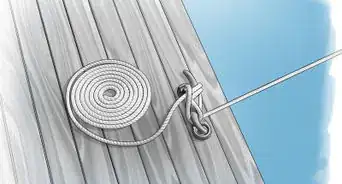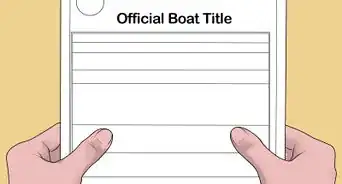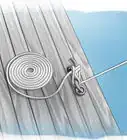This article was co-authored by wikiHow staff writer, Eric McClure. Eric McClure is an editing fellow at wikiHow where he has been editing, researching, and creating content since 2019. A former educator and poet, his work has appeared in Carcinogenic Poetry, Shot Glass Journal, Prairie Margins, and The Rusty Nail. His digital chapbook, The Internet, was also published in TL;DR Magazine. He was the winner of the Paul Carroll award for outstanding achievement in creative writing in 2014, and he was a featured reader at the Poetry Foundation’s Open Door Reading Series in 2015. Eric holds a BA in English from the University of Illinois at Chicago, and an MEd in secondary education from DePaul University.
Learn more...
If you’re new to boating and plan on doing anything more elaborate than taking a canoe out on a small pond, you need to know how to write a float plan. Boating can dangerous, and a good float plan may be the difference between life and death if something unexpected happens on the water. In this article, we’ll explain what a float plan is, what you need to include, and what you need to do once you’ve put everything together.
Things You Should Know
- A float plan is a detailed compilation of information about you, your boat, and where you’re going.
- Leave your float plan with a trusted friend or family member and ask them to give it to the authorities if you don’t return or disappear.
- You do not need to file a float plan if you’re just taking a casual boating trip in a public, well-traveled area.
Steps
References
- ↑ https://dbw.parks.ca.gov/?page_id=28746
- ↑ https://asa.com/news/2016/03/02/whats-a-float-plan/
- ↑ https://asa.com/news/2016/03/02/whats-a-float-plan/
- ↑ https://asa.com/news/2016/03/02/whats-a-float-plan/
- ↑ https://asa.com/news/2016/03/02/whats-a-float-plan/
- ↑ https://dbw.parks.ca.gov/?page_id=28746
- ↑ https://www.nps.gov/calo/planyourvisit/paddling.htm
- ↑ https://asa.com/news/2016/03/02/whats-a-float-plan/
- ↑ https://theboatgalley.com/float-plans/






























































